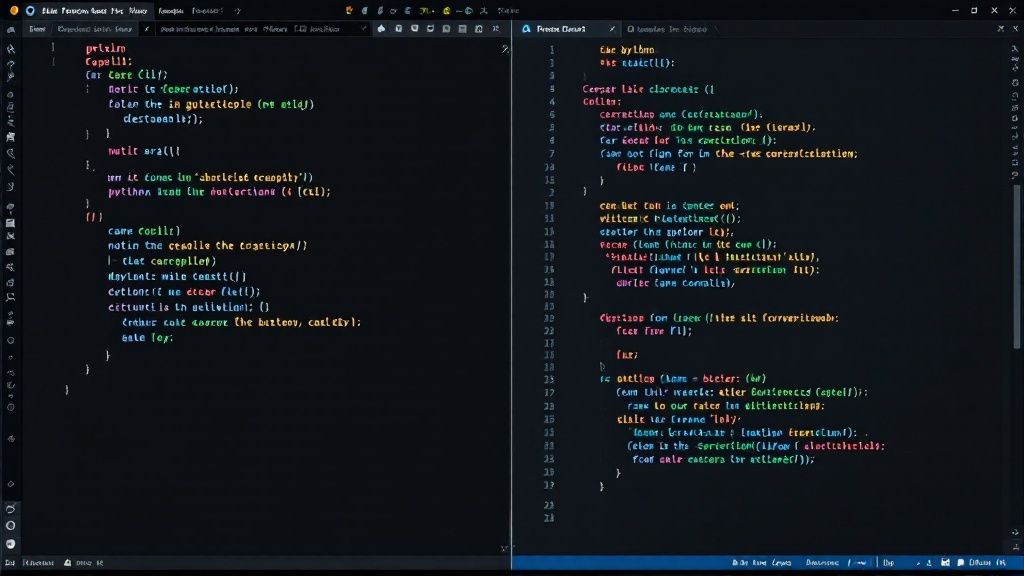Learn how to write effective Python documentation using docstrings, inline comments, type hinting, and documentation generators like Sphinx. Improve code readability, maintainability, and collaboration with these best practices.

Well-written documentation is crucial for any successful Python project. It acts as a guide for understanding and using the codebase effectively. This is particularly important for collaborative projects, but even solo developers benefit from documenting their work. This post will explore why documentation matters and how following Python best practices can lead to a more maintainable and robust project.
Imagine trying to assemble furniture without instructions – it would be incredibly frustrating. Similarly, working with a Python project lacking documentation can be a confusing and difficult experience. Documentation provides essential context and explanations, allowing developers to interact with the codebase efficiently. This is especially helpful when returning to a project after a break or when new team members join. Good documentation simplifies the process of understanding the code, enabling developers to concentrate on building features rather than deciphering complex logic.
Maintaining a Python project involves bug fixes, enhancements, and adapting to changing needs. Best practices suggest that code should be understandable and modifiable by anyone working on the project. Documentation plays a vital role in this maintainability by offering a clear overview of the project’s structure, functions, and individual parts. As a result, changes can be implemented more quickly and with a reduced risk of new bugs. For instance, a well-documented function will detail its purpose, parameters, and what it returns, allowing others to modify it confidently.
Effective Python documentation includes several components, each with a specific role. Docstrings, embedded within the code, provide brief descriptions of functions, classes, and modules. Inline comments offer more detailed explanations for specific code sections. Larger projects often use a dedicated documentation site, generated with tools like Sphinx, offering a comprehensive project overview, including tutorials, examples, and API references. Together, these elements provide a complete and accessible resource. This organized structure helps ensure the documentation remains consistent, accurate, and easy to navigate, supporting the project’s maintainability and longevity.
A structured approach to documentation ensures clarity and ease of navigation, improving a project’s maintainability. Understanding and implementing docstring fundamentals is key to this approach. These conventions offer a standard way to document Python code, simplifying understanding for everyone. Following docstring best practices greatly improves a project’s readability and usability.

Docstrings (documentation strings) are multiline strings used to document Python code. Unlike inline comments that explain specific lines, docstrings give a general overview of a function, class, module, or method’s purpose and usage. They are written directly after the object’s definition, enclosed in triple quotes ("""Docstring goes here"""). This placement allows easy access via introspection tools and aids in automated documentation generation. For instance, Python’s help() function displays an object’s docstring for quick access.
A good docstring usually has these parts:
While docstrings give high-level documentation, inline comments explain specific lines or blocks of code that may be less clear. Use inline comments sparingly, focusing on the reasoning behind the code, not the action. For instance, if you’re using a complex algorithm, an inline comment could explain why that particular algorithm was chosen. Avoid commenting on code that is self-explanatory; aim for clarity, not clutter.
By following these best practices, developers create understandable and maintainable code, promoting collaboration and project success. This clear documentation approach minimizes ambiguity and makes the codebase more accessible.
Good docstrings and inline comments are fundamental for Python documentation. However, as projects become larger and more intricate, efficiently managing and presenting documentation grows in importance. This is where documentation tools and generators become essential. These tools automate the process of creating structured, searchable, and navigable documentation, saving time and effort.
Sphinx is a leading Python documentation generator. It transforms your docstrings and comments into well-formatted HTML, PDF, and other outputs. Sphinx uses reStructuredText, a simple markup language, allowing you to focus on writing clear content without complex formatting. Sphinx also offers extensions that add features like automatic API documentation generation. The autodoc extension, for example, pulls docstrings directly from your code, keeping API documentation synchronized.
Other automated documentation generators cater to various preferences. Some integrate with specific editors or build systems, while others prioritize simplicity for smaller projects. Many share the common goal of automating tedious tasks, letting you focus on explaining your code clearly. Some even automatically generate documentation for every function and class, including parameters, return types, and exceptions.
The ideal documentation tool depends on your project’s needs. For large, complex projects with extensive APIs, a powerful tool like Sphinx is usually the best option. For smaller projects with simpler needs, a lighter-weight tool might be more suitable. Choosing the right tool improves efficiency and ensures consistent, accurate, and maintainable documentation, contributing to your project’s success.
Good documentation tools are important, but the real value of Python documentation lies in clearly showing how the code works. This means including practical examples and usage scenarios that illustrate functionality. This section explores best practices for including code examples and usage scenarios, making your documentation a valuable learning tool.

Code examples should be concise and focused, illustrating a specific feature or use case. They should be easy for beginners to grasp, but also demonstrate the code’s practical application. For example, a function that sorts a list should be demonstrated with different list types and sorting criteria, allowing users to see how to adapt it to their specific needs. Including examples that handle various edge cases is also highly valuable.
Code snippets without context are unhelpful. To make examples effective, include explanations that clarify their purpose and expected results. Describe what the code does, why it’s written that way, and what output to expect. For instance, explain input parameters and how they influence the output. Highlighting important details and potential issues helps users apply the code correctly.
Testable code examples are a best practice. This increases confidence in the code’s accuracy, allowing users to run the examples and verify the results. This active learning is more effective than passively reading descriptions. Testable code also helps users understand how code sections interact and aids in debugging.
Simple examples are crucial for basic concepts, but demonstrating how your code works in realistic situations is equally vital. Show its application in contexts users might encounter in their projects. Instead of just illustrating basic functionality, incorporate the code into a larger example that solves a practical problem. This provides broader context and shows how different parts work together, inspiring users with potential applications.
Creating comprehensive documentation is a significant step, but maintaining its accuracy and relevance is an ongoing process. This means regularly updating the documentation to reflect code changes, ensuring consistency, and establishing a streamlined workflow for incorporating updates.
As code changes, so must its documentation. Every modification, whether a bug fix, a new feature, or refactoring, requires corresponding documentation updates. This might involve updating docstrings, revising code examples, or adding new sections to the documentation site. This ensures that the documentation accurately represents the current state of the codebase. Using version control for documentation is also a good practice, allowing for change tracking, reverting to previous versions, and collaborative editing.
Consistency in style, formatting, and terminology is essential for clear documentation. This includes everything from docstring structure to the tone of voice. Consistency makes the documentation easier to read and reduces user effort. A style guide can ensure consistent formatting, terminology, and structure. Using tools that automate formatting and style checks can help enforce these rules and catch inconsistencies early.
A well-defined workflow is necessary for efficiently updating documentation. This workflow should integrate seamlessly with the development process, treating documentation updates with the same importance as code changes. This might involve including documentation tasks in the development lifecycle, such as requiring documentation updates during code reviews. Automating documentation generation and deployment can streamline the process and minimize manual work. These best practices ensure documentation remains a valuable and up-to-date resource.

Writing documentation is only the first step. A thorough review process is critical. Just as code requires testing, documentation needs review to ensure clarity, accuracy, and completeness. This process involves self-review, peer feedback, automated checks, and user testing.
The first step in any review is a thorough self-review. After writing, step back and revisit it with fresh eyes to catch errors, inconsistencies, and unclear areas. This is similar to proofreading; it helps identify and correct mistakes. During self-review, ask yourself if the documentation accurately reflects the code, if explanations are clear, and if any information is missing.
Peer review provides valuable feedback from a different viewpoint. Having another developer review your documentation can uncover areas you might have missed. This is especially useful for finding technical inaccuracies or unclear explanations. For example, a peer reviewer might notice a missing parameter description or an unclear example.
Automated tools can improve the review process. Linters and style checkers can identify formatting issues, typos, and deviations from style guides. These tools automate tedious aspects of review, allowing reviewers to focus on clarity and completeness. For instance, a linter might flag a docstring that violates project conventions.
The effectiveness of your documentation ultimately depends on how well it serves its users. User testing involves having real users interact with the documentation and provide feedback. This helps identify areas for improvement from a user’s perspective. For example, user testing might reveal that a section is difficult to navigate or that a key concept is poorly explained. Incorporating this feedback helps create user-centric documentation. This iterative process of review and refinement ensures the documentation remains a valuable and reliable resource.
Streamline your documentation process with DocuWriter.ai. Generate accurate and consistent Python documentation effortlessly, saving valuable time and resources. Learn more about how DocuWriter.ai can transform your documentation workflow.